Leonard Matthews, General Managing Editor of Fleetway and the Eagle Group of Comics, was a Creative Visionary… but that, Roger Perry argues in his extensive biography of the man which continues here on downthetubes, is only due to him having utilised the ideas of others.
In the final part of this twelve-part series, Roger Perry clarifies points made in past chapters, looks back on Leonard Matthews career – and sums up his contribution to British comics – and publishing in general…
The Dipping of Hands into The Freelance Money-Pot
2016
Looking back at all the goings-on during that magical time in the 1960s and 70s – now more than half-a-century ago – it’s pretty clear that a good many creative persons employed within the publishing environment of Fleetway Magazines had not only had the opportunity to earn copious amounts of extra cash over and above their given weekly wages but were also being encouraged to do so (as you no doubt will read later on).
Referring back to Part Two, Brian Woodford (who’d been an editorial assistant on the Leonard Matthews-initiated comic magazine Top Spot before in effect becoming its editor – this being during its dying throes) hadn’t pulled any punches when he’d divulged that staff had not been shy in dipping their hands into the freelance pot for the slightest thing.
He’d continued by saying:
“On Top Spot – with staff quickly increasing to around 12 – so too had the problems become compounded… problems that might possibly have contributed to its eventual downfall.
Staff had earned a large quantity of extra cash for just reading the material and giving it either the thumbs up sign… or down as the case may be.
There were just too many cooks in the kitchen and this had created far too many overheads.”
Also in Part Two, you will recall an exchange of mailings between Brian Woodford and Michael Moorcock (correspondence that had appeared on the latter man’s website called Michael Moorcock’s Miscellany). It was to the effect that Alfred Wallace had been running a scam whereby he had paid himself for reprints (allegedly supplied by others), and that through his ill-gotten gains, he had been able to buy himself three houses.
I have the obligation to interject an extract from a recently-received disclaimer, one that came from Brian – for all my contacts had the chance to read these scribes prior to this series being posted on downthebubes.
This is what he has said:
“The dipping into the pot on Top Spot was not under the table or in any way illegal under terms of employment. My mentioning it was in the context of the huge accumulation of stock that transpired because so many cooks were being paid for even the most trivial reasons… for instance, simply reading a first published American short story to determine if it was suitable for Top Spot.
This, while very much OTT, was legitimate under the rules that applied before the Mirror [became involved]. When the Mirror took over, it put an end to staff provided freelance material thus ending an extra source of income for many. Whether or not some did provide material under a different name and through some kind of agent (the way some did at Odhams) I have no idea. I did not. I had no knowledge of anything suggested by Mike Moorcock in our exchange.”
Michael Moorcock had gone on to say that on discovering Alf Wallace’s orchestrated underhandedness, he’d hot-footed to inform someone called Bill Baker, only to be told to “forget it”… solely due to the fact that Baker was apparently doing much the same thing.
Prior to writing these articles, I had no idea as to who this Bill Baker was, for not only had I not been enlightened, but I was not given to understand that working within the boundaries of Fleetway House at that time, there had actually been two gentlemen of that name.
Along with other great artist resources on the web such as Lambiek, the Book Palace web site lists hundreds of artists… including one individual called Bill Baker. On reading through the blurb placed on offer, I had assumed that he was the man Moorcock had been referring to. But apparently, this was not so – clearly I was mistaken. With him having read an early draft, once again Brian Woodford has had due cause to find fault with something I had said. This was his observation on the matter.
“The Bill Baker Michael Moorcock mentions is not an artist. He is Howard W. Baker who was editor of the Sexton Blake Library. He was referred to as Bill, and whether before or after the Mirror edict on freelance material, he wrote many of the Sexton Blake titles as perhaps Moorcock did under one of the various generic names used. I have no knowledge of any of the charges against Alf or Matthews and thus in no way can I add credence to them.”
Being armed with this new piece of information, I tapped Howard W Baker (the name offered to me by Brian) into the search engine and GoodReads offered me this:
“W Howard Baker, born January 1st, 1925, died January 1st, 1981. Specialising in action noir, William Arthur Howard Baker got his break writing for the Sexton Blake series of detective thrillers in the mid 1950s eventually becoming an editor. He also wrote under the name of W A Ballinger and had a pen name of Peter Saxon.”
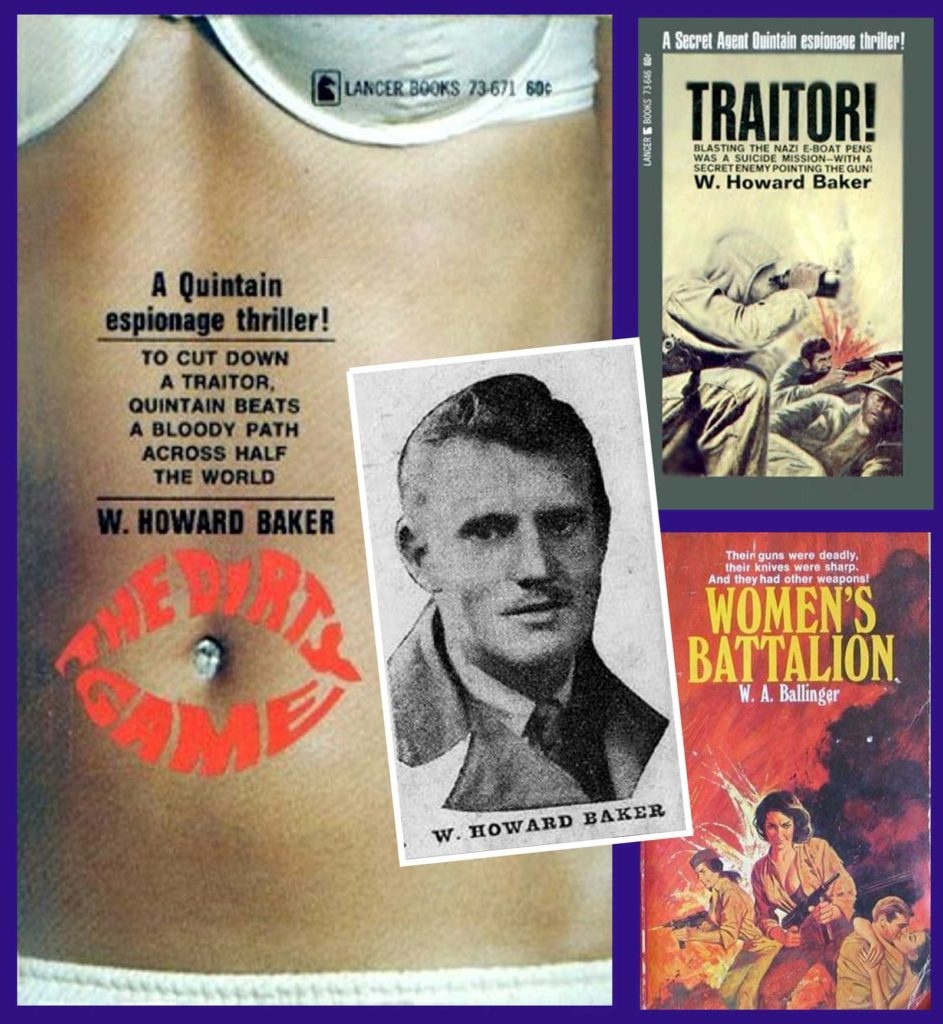
Well, that seems to have cleared that little misunderstanding up. And for that, I now offer Bill Baker – the artist – my humblest apologies. But then dear reader, I am sure that both he and you will understand implicitly my predicament, particularly when I’d had no idea that two Bill Bakers had been working at Fleetway at one and the same time… but hold on, hold on! It appears even now, that the confusion hasn’t been entirely ironed out anyway. Under that same search-engine heading, I found yet another web-page – this one on the Irish Comics Wiki:
“Arthur Athwill William Baker, who published as W. Howard Baker and was known to his acquaintances as Bill, was born in Cork on 3rd October, 1925. He wrote Sexton Blake stories, and joined the staff of the Amalgamated Press (later Fleetway Publications) as editor of the Sexton Blake Library in 1955.
He revamped the title, creating Paula Dane, Blake’s secretary, and improved sales. He worked at Fleetway House until 1964, during which time he also became controlling editor of a group of comics, presumably some or all of the digest-sized picture library titles: Steve Holland credits him as writing for those titles (he wrote at least one issue of War Picture Library, drawn by Hugo Pratt, in 1960, collected in a volume of Pratt’s British war stories published in France) and being the originating editor of Air Ace Picture Library in 1960.
He wrote novels in a variety of genres as W. Howard Baker and under pseudonyms including Peter Saxon, W. A. Ballinger, Desmond Reid and William Arthur, some or all of which were house pseudonyms he shared with other writers. He died in Wimbledon, London, on 13th February, 1991.”
The many similarities between the two afore-mentioned web-page entries suggest that they must both be speaking about the same man. But clearly, some details of one are wildly differing in comparison with entries offered by the other. The second entry seems far more likely, but it just goes to show how mis-information easily becomes the norm when being banded about unchecked and uncorrected. Even Woodford – in pointing out my initial error – had got the man’s name wrong (albeit having been pretty close).
With the Bill Baker conundrum seemingly solved, you now know almost as much about all this as I do. . . and so I now ask you this: are we really being expected to accept the fact that Matthews had known nothing about all this?
Perhaps for Matthews, it had been a case of: “Well, if I’m getting what I can out of the system, I don’t see why I should spoil it for everyone else?”
I have no reason to believe that mischief of this type (or scale) had gone on at Hulton Press Juvenile Publications prior to the influx of staff from Fleetway House… not unless you wish to include Sir Edward Hulton’s irritation over the indulgence of exorbitantly expensive lunches by Eagle staff; the high consumption of electricity; the pricy telephone bills; and the regular re-stocking of Marcus Morris’ drinks refrigerator.
The first indiscretion I became aware of that involved an ex-Fleetway staff member was that of Barry Cork (Editor of Robin). Transferring first to Hulton House and then to 96 Long Acre via the annex, it was from November 1963 that he secured extra income by writing romantic stories for Woman, Woman’s Own and Woman’s Realm (please see Part Seven). You could ask as to how this extra-curricular activity came to my notice?
In Eagle Daze Part Two, you will have read that I spent many a pleasing lunch-hour at the Oasis Swimming Pool in the company of Max (Maxwell Frank) Clifford. At 96 Long Acre, Max shared an office with Muriel Rolfe and, over time, I became quite matey with her. She had been Barry Cork’s secretary and she told me that she spent much of her working day typing up Barry’s hand-written manuscripts. (Muriel, who by this time had reached her middle-age, had a striking resemblance to the actress Glynis Johns).
In addition to that, Chief-Sub Shirley Dean needed to interrupt Barry’s romantic thoughts on a weekly basis by taking him that week’s pasted-up Robin dummy (for he was, after all, Robin’s editor).
Intriguingly, with Barry having remained behind locked doors from Monday to Friday, his seclusion was such that despite Woodford’s and Cork’s offices being just six doors away from each other down a long corridor, Woodford became convinced that Barry Cork no longer worked with us at 96 Long Acre.
I do know that Brian was not involved in any extra-source of income scams. How can I be quite so sure? In an email he sent on Tuesday, 8th July, 2014 – now almost two years ago – he said this:
“I can picture the cups growing penicillin that [Albert] Cosser used to get his instant coffee when he arrived some time after eleven. And I felt guilty slipping out ten minutes early to dash over to Cannon Street to catch the 6.20 to Ashford. A difficult time compounded by never getting a shilling raise the whole time I was there. I recall writing pieces for Boys’ World for free and even scripts for the Wham annual for which I got nothing.”
QED methinks. Extracurricular freelance – well, I am not totally innocent on that score. I’ve spoken many times of acting out the role of a photographer when my true job-description had been that of a designer. And apart from the odd exception such as those times when Billy Fury, Donovan or Tom Jones called into our offices, this was almost always done in my own free time (either during the evenings or at weekends) and was carried out well away from the office environment. However, in the case of Donovan, Fury and Jones, well, I could hardly ask them to hang around until after half-past-five before I could legally capture their images, now could I?
Another of my contacts (having been sent the first draft of my articles) had emailed me with this:
“I was a letterer, and on occasion, strip artwork for one of the titles would be delivered in the afternoon and I, or one of the other letterers would be asked if we could letter it overnight as it was due for press the following day. If you think about it, if we could do it, it would be much more convenient to the company than trying to arrange for delivery to a full-time freelancer from London and then wait for it to be delivered back again. We could take it home with us and bring it back into work the following day. Bear in mind, there was a set page rate for lettering so there was no fiddle going on and the extra bit of money always came in handy.”
He, of course, is quite right, but I am also sure he knows that that is not what I am getting at, so I think it best if we leave it there – for there are always exceptions to every rule.
There are many stories about Leonard Matthews and while in the process of gathering material for this portrayal on Leonard Matthews, a number of colleagues who were connected in one way or another with the publishing business; with Matthews; and / or with Fleetway, have come forward with their own. At their request, I shall keep my informants unidentified apart from prefixing their spoken words only with an A, B and so on.
Repeating the words of one of my informants, he correctly noted “Although you may be out of reach in the Philippines, those of us who are domiciled in the UK might not be quite so lucky!”
A
“Matthews also spirited away an enormous amount of material from the vaults of Fleetway that ended up with a private dealer in Norwood. Whether this involved straightforward cash transactions, or he simply undertook to sell what he could on Matthews’ behalf, remained unclear.”
After A told me this, I did, in fact, go into Google to try to determine for myself who this private dealer in Norwood might be, only to discover that there had been no less that 23 separate art dealers in Norwood that supposedly had dealt in this type of art… although on going through them one by one, I came to the conclusion that one of these is purported to be an establishment that deals with the art of cooking (well you know what these search-engines are like, ask for one specific thing and they throw in everything else including what hotels are available in Norwood and also the proverbial kitchen sink – Norwood, by the way is south of London and fairly close to Crystal Palace).
“A” was also going to tell me more about the City Magazines / Martspress wheeling and dealings (Part Eight) but obviously has now changed his mind on that one.
B
“I remember the stories about Matthews backing his Rolls Royce up Bear Alley and loading his boot up with artwork from the archives to use for reprints in various projects of his.”
“B” went on to say that following the move to King’s Reach Tower where John Sanders had taken over from where Matthews had left off – and therefore had become the overall publisher overseeing a large number of papers including the likes of Look and Learn – “B” had got somewhat hauled over the coals for not making full use of his expenses claims! (Hmm, does that sound like a loyal employee who has the fortunes of the company he works for close to his heart?)
C
“Lots of comic art theft horror stories down the years. Some of the Countdown assets – the ‘Countdown’ strip – are in the Express archives, did you know?”
I did know that much artwork that had been first used in TV21 and then three or four years later, it was used again – this time in Countdown. It was indeed stored in the vaults beneath the Daily Express building when it was located beside Blackfriars Bridge. Although I was Art Editor on Countdown, I was never involved, for it had been Dennis Hooper – Countdown’s Editor – who had done all the rummaging through of vintage artwork just feet below the thundering wheels of Fleet Street traffic. With him having been Art Editor for TV21, it was logical that he had the knowledge over the availability of the old TV21 art at his finger-tips.
D
“I’ve heard a similar story, although more general about artwork being sold out of the back of vans, filched from IPC…”
Do you remember me telling you this tale, about an incident that had taken place one Friday night after everyone else had left to go home for the weekend? – I wrote about this in Part Five. This had been when some resentful soul (who was never ever identified) had run a trail of pungent Cow Gum rubber adhesive between the lift-shaft – where he had made his escape – and over to the store of artwork. Could it be that this resentful soul knew that Matthews had been half-inching much of Fleetway’s store of already-used artwork and had decided for himself to put a stop (albeit unsuccessfully) to his illicit deeds?
Then in Part Eight, I offered you details of Martspress and will copy and paste here much of what I had said then:
“Leonard James Matthews is listed as having been the director but that he had resigned on the 9th November, 1997 (which incidentally had been the date of his death). It also shows that Miss Audrey Elizabeth Flower was listed as Company Secretary and that she too had resigned (but this had been eighteen days later on the 27th November, 1997).
“The report went on to say that Ms Barbara Mary Matthews (Leonard’s wife) had become the new director on that latter-mentioned date, and to take on the role of the new Company Secretary, Ms Josephine Rose Howe (presumably Leonard’s daughter) is mentioned.”
These facts can be confirmed and collaborated via the Company Check web site.
I followed those two paragraphs with the one single question: “For what possible reason does this company continue to exist?”
I’m not experienced enough in these matters to be able to come up with a plausible legal reason, but maybe one (or more) of our readers will have a greater insight of these things and will enlighten us in the comments area at the end of this piece. The thought going through my mind had been that, perhaps, there was some crafty loophole whereby as and when this heap of illicit artwork I have spoken of so many times becomes sold; that the proceeds can be hidden through the remittances being transferred into the ongoing Martspress accounting system?
I’d like to say that I could go on and on and on, on this but I should imagine by now that you will already have got the picture. However, as a final note to this, you could ask as to what my own views are. I would reply that perhaps, through his various machinations, Leonard Matthews had actually – but unwittingly – done us all a great favour.
As you may know, from 1974 through to 1985, I was employed by Purnell Books. When first joining them, they had been based in London’s Poland Street – Poland Street being a road that butts onto Oxford Street to the north, has Soho to the east, Shaftsbury Avenue to the south (on the other side of Berwick Street Market) and Carnaby Street over to the west. Following my arrival, Purnell Books had remained in London for a further two months before moving out to a multi-story office block in Maidenhead within the Royal County of Berkshire.
From November, 1974 onwards, all artwork that had gone through my hands and had subsequently been returned from the printers, had been stored (fairly tidily) in a back unused store-room at Berkshire House, and in nine cases out of ten, it had been the Purnell Books Production Department – namely David Westcott and his two assistants Martin Lewis and Michael Gee – who had placed the returned artwork there… still cocooned in the sturdy brown wrapping paper it had come back in.
In 1980 – along with so many other publishers and printers up and down the country – Purnell Books had been sucked up into Robert Maxwell’s British Printing and Communication Corporation (BPCC) with the result that in 1981, the company was relocated and its assets were shipped lock, stock but with only some of its accumulated barrel, down to Somerset. It is here that I now have great regrets, for I believe that the huge store of artwork was little more than placed into a council skip to be later used as a Berkshire bog land-fill.
Millions of pounds-worth of artwork – all lost and now gone forever… and probably just lying there under the foundations of some unsuspecting soul’s two-bedroom house or helping to prop up a motorway flyover. As I have said in Part Nine, once the art had been colour separated by the printer, in theory, the artwork was no longer needed.
(That those films will now be long gone, anachronisms in a digital age – itself beset with problems of old format digital storage no longer accessible to modern computers – serves as a cautionary tale for those seeking to publish collections of these old comics and magazines).
I kick myself for not having taken more interest in this material, for had I done so, I would definitely be far richer today than I am. Despite Leonard Matthews’ underhand shenanigans, perhaps by doing what he had done, his collection of art still “out there”, it’s quite possible that he did the world (and those who relish the works of these fine artists) a stupendous favour.
As a final tailpiece to all this, Robert Maxwell – for whom I had worked a number of years – died on Tuesday, 5th November 1991. It took almost a further month for the authorities to discover that he had committed a massive fraud by plundering his employees’ pension funds in order to shore up his failing companies.
I – along with hundreds (perhaps even thousands) of other retired souls – receive just 50 per cent of the entitled pension we should have been receiving. In my view, compared to Maxwell, Leonard James Matthews has to be regarded as having been quite a saint.
Roger Perry
The Philippines
[divider]
More Eagle Daze
• Eagle Daze: The Life and Times of Leonard James Matthews – Part One
Roger explores the beginnings of the destruction of the Eagle…
• Eagle Daze: The Life and Times of Leonard James Matthews – Part Two
The comic magazine Top Spot, published in 1958, was Matthews’ brainchild – but it was the male counterpart of an already existing magazine and it was a title that faced plenty of problems as it ran its course before merging with Film Fun after just 58 issues…
• Eagle Daze: The Life and Times of Leonard James Matthews – Part Three
Roger outlines how Matthews jealousy almost destroyed the Eagle…
• Eagle Daze: The Life and Times of Leonard James Matthews – Part Four
Roger reveals a possible mole working on the Eagle and trouble behind the scenes on Girl…
• Eagle Daze: The Life and Times of Leonard James Matthews – Part Five
How a Marks & Spencer Floor Detective Became Managing Editor of Eagle…
• Eagle Daze: The Life and Times of Leonard James Matthews – Part Six
Roger reveals how Dan Dare co-creator Frank Hampson was thorn in Leonard Matthews side…
• Eagle Daze: The Life and Times of Leonard James Matthews – Part Seven
Trouble at the top for ‘The Management”, the troubled debut of Boys’ World – and the demise of Ranger
• Eagle Daze: The Life and Times of Leonard James Matthews – Part Eight
On the creation of Martspress, the company that would publish TV21 in its later, cheaper incarnation…
• Eagle Daze: The Life and Times of Leonard James Matthews – Part Nine
Moving from the sublime to the ridiculous, Roger recalls how Men Only was given a new lease of life – and Leonard Matthews’ ignorance of Star Wars…
• Eagle Daze: The Life and Times of Leonard James Matthews – Part Ten
A phone-call out of the blue brings about a closer relationship with the one man Roger had once feared the most…
• Eagle Daze: The Life and Times of Leonard James Matthews – Part Eleven
A search for elusive promotional film stills end in the middle of nowhere in a one horse town without a horse – and Eagle‘s production methods are recalled
• Eagle Daze: The Life and Times of Leonard James Matthews – Part Twelve
Roger clarifies points made in past chapters, looks back on Leonard Matthews career – and sums up his contribution to British comics – and publishing in general…
[divider]
This article, which is being published in a total of 12 parts, has been put together using material from Leonard Matthews’ obituary as written by George Beal for the Independent newspaper dated Friday, 5th December 1997; also taken from the Independent newspaper dated Sunday, 23rd October 2011 is a piece authored by Jack Adrian (a.k.a. Christopher Lowder); Living with Eagles compiled and written by Sally Morris and Jan Hallwood (particularly pages 219 to 222); David Slinn’s research notes during 2005 in connection with the authoring of Alastair Crompton’s Tomorrow Revisited and from Brian Woodford’s association with Matthews at the Amalgamated Press between 1955 and 1962. Entries also come from both Wikipedia and from the internet under the heading Fleetway Publications.
Further pieces have been taken from Eagle Times as and where identified; the blog-spots of Michael Moorcock’s Miscellany (particularly 9th and 10th April 2013) and Lew Stringer’s Blimey! where he refers to the Top Spot magazine. The remainder is from my own personal association with Leonard Matthews between the years of 1978 and 1991.
• You can read Roger Perry’s full biography here on Bear Alley
Artist, designer, photographer and writer Roger Prölss Perry was the youngest of three children – the given name of Prölss deriving from the maiden name of his paternal German grandmother.
Born in Guildford, Surrey in July 1938, after school he studied at the Regent Street Polytechnic School of Art close to Oxford Circus, the West End and the BBC where he achieved the National Diploma in Arts and Design before commencing with a further year of study in commercial design under the guidance of Ley Kenyon DFC, noted for his writing, art and underwater photography, and lithographer Henry Houghton Trivick (1908-1982).
His first job in the media industry was as an in-house illustrator on Farmers’ Weekly, beginning in March 1959, working under the direction of Art Editor Alfred Harwood, working on the seventh floor of Hulton House at 161-167 Fleet Street, London. He was there for just five months before going into two years of National Service until August 1961, returning to the company (now Long Acre Press) as a layout artist (designer) at “Juvenile Publications”, the umbrella name for Eagle, Girl, Swift and Robin. He joined the team of three other layout artists – Bruce Smith, Ron Morley and John Kingsford – on Monday, 28th August 1961 where he remained until May 1966.
He then began work as Art Editor at Century 21 Publishing until June 1969. As he says: “Yes, I suppose I could be described as a ‘layout artist’ but I commissioned art (Art Editor), kept an eye on Andrew Harrison and Bob Reed (Studio Manager), took photographs as and when needed (Resident Photographer) and generally made sure that everything was present and correct when everything needed was being sent to the printer (Office Boy). I also (with the help of Linda Wheway) came up with the ideas and photographs for five books (Author?)”.
From Century 21 Publishing, Perry then went to Hamlyn Books (July 1969 to October 1970); and worked for Bob Prior’s premium packages for two months before joining ex-Art Editor of Century 21 Publishing Dennis Hooper in December 1970 who was now Editor of Countdown at Polystyle Publications.
Perry remained with Polystyle until September 1974, when he became Art Editor for Purnell Books, remaining with the publisher for eleven years – until 1985 when he started operating his own public relations business.
Due to his growing interest in the art and the close proximity of Bath where the nerve centre of the Royal Photographic Society is, he achieved the distinction of Associate Member in 1987 for audio/ visual presentations thus entitling him to display the letters ARPS after his name… although he rarely does.
Having had a life-long fascination for the Far East, he moved to the Philippines in the 1990s, where he married Marilyn Gesmundo. He lived for 11 years on Cataduanes before moving a number of times recently following Typhoon Haiyan, finally with Raquelyn Navarro in the city of Naga in Cebu.
Sadly, Roger died on 23rd July 2016 following a heart attack, just one day after his 78th birthday.
He is survived by his daughter, Rae. His son, Marcus, predeceased him after a long battle with cancer.
Categories: Creating Comics, Features
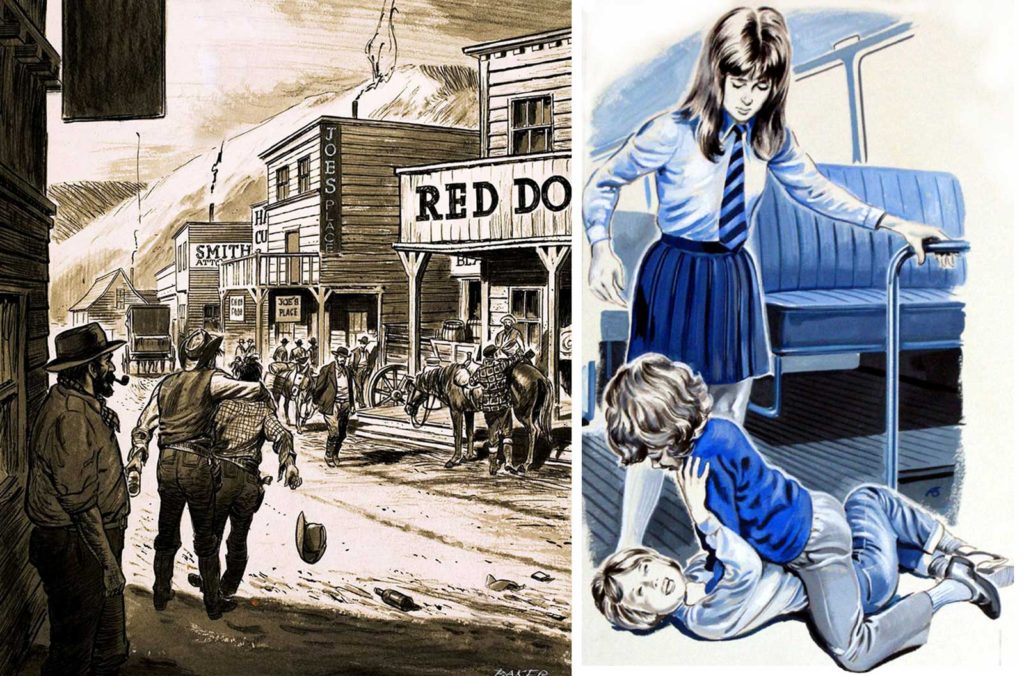
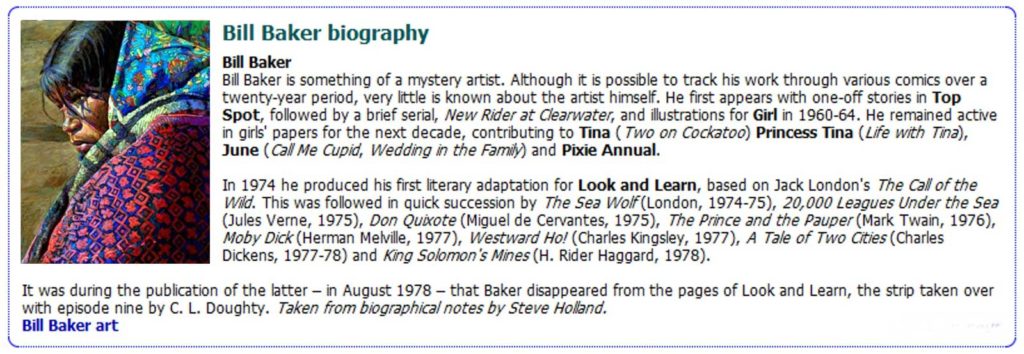
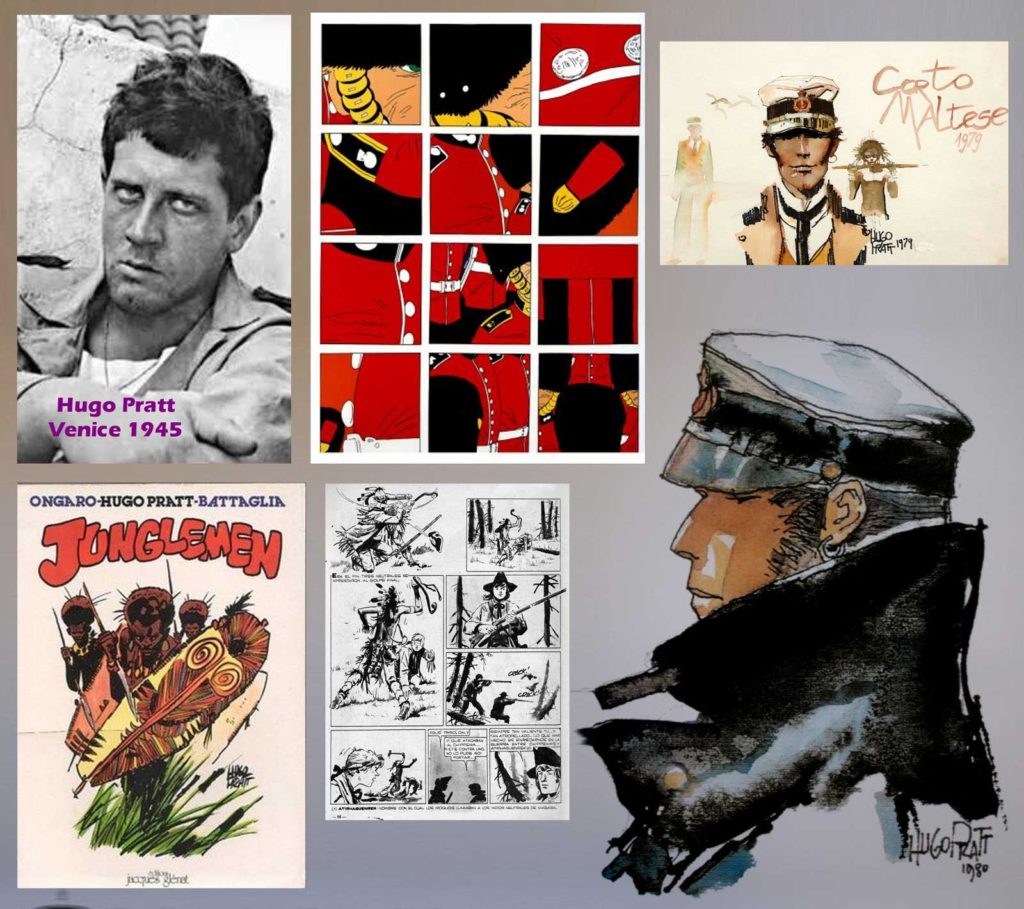

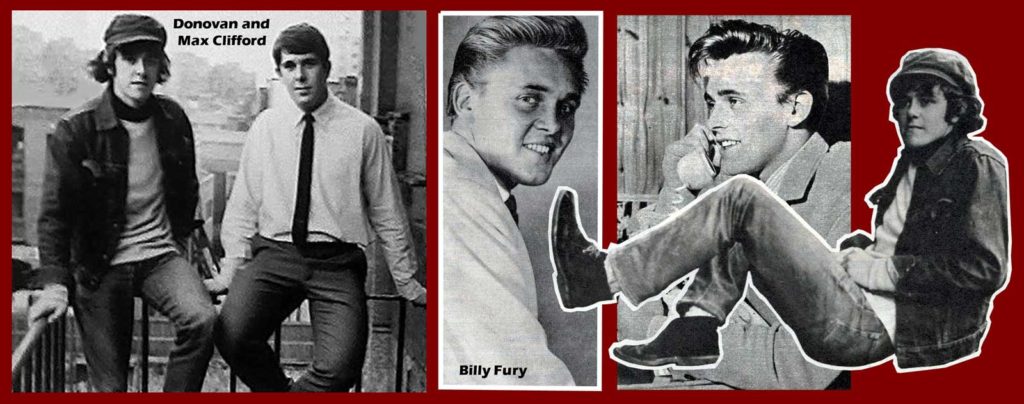

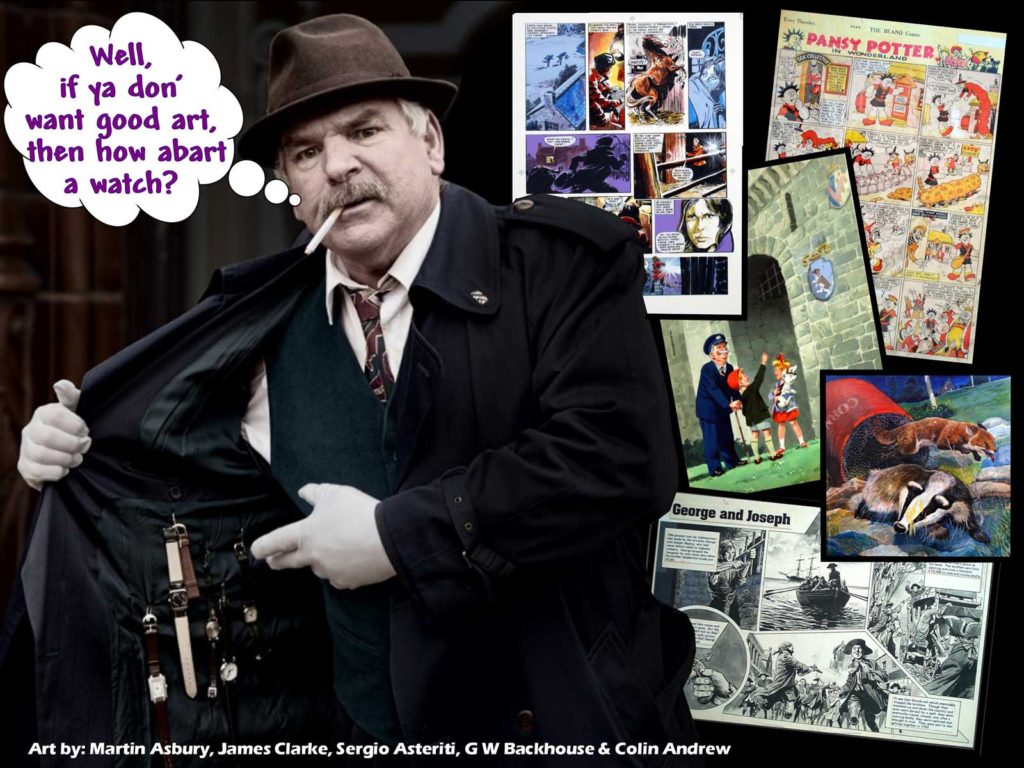

 Works of mysterious pre-Code horror artist discovered in attic
Works of mysterious pre-Code horror artist discovered in attic  Crowdfunding Spotlight: Who Killed Nessie? A Quick Chat with Paul Cornell & Rachael Smith
Crowdfunding Spotlight: Who Killed Nessie? A Quick Chat with Paul Cornell & Rachael Smith  Who remembers Jerry Siegel’s British superheroes,”Gadgetman and Gimmick-Kid”?
Who remembers Jerry Siegel’s British superheroes,”Gadgetman and Gimmick-Kid”?  Exclusive: Creating Comics – Chris Weston talks “Time Breakers” and “Paranoid Gardens”
Exclusive: Creating Comics – Chris Weston talks “Time Breakers” and “Paranoid Gardens”